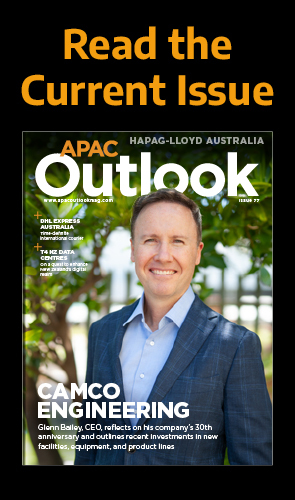Vietnam’s rapid economic development has been unprecedented. Described by the World Bank as one of the most dynamic emerging countries in the East Asia region, its shift from a centrally planned economy to a market economy has transformed Vietnam into a thriving nation.
The year is 1985 and Vietnam is one of the poorest countries in the world. The country had been left in a state of disrepair after the end of the 20-year Vietnam war, and the subsequent centralised five-year plans implemented by the Vietnam Communist Party were doing little to steer the country into a new prosperous era, with GDP per capita estimated at between $200 and $300.
Blink, and it’s 2019. Vietnam is now one of the stars of the emerging markets show, with export revenues outstripping a GDP of $223.9 billion, equating to $2,343 per capita – a 10-fold growth in the past quarter century.
Needless to say, this rapid economic development has been unprecedented; something of a miracle. Described by the World Bank as one of the most dynamic emerging countries in the East Asia region, its shift from a centrally planned economy to a market economy has transformed Vietnam into a thriving lower-middle income nation.
Now a transparent business environment that is home to an annual GDP growth rate forecast at 6.8 percent and progressive, internationalist policies, its future looks extremely bright.
“Vietnam is an incredibly interesting country,” Charlie Humphreys, Director of Corporate Affairs at Asia House, affirms.
“You can really feel the buzz of entrepreneurial spirit. There’s a growing understanding of the international markets, making it easier for people from all walks of life to engage with the country for both business and pleasure. It’s vibrant, with a large population and an ideal location nestled on the edge of ASEAN and looking our across the Pacific.”
Asia House is a London-based organisation positioned as a centre of expertise on trade, investment and public policy, helping to showcase the opportunities presented by countries like Vietnam, amongst others, to the western world.
As part of this mandate, the organisation recently signed a memorandum of understanding with the country’s Department of Foreign Affairs for Provinces aimed at promoting trade and investment relations between Vietnam’s hinterland regions and UK stakeholders.
“We decided that, given where Vietnam’s trajectory is and what its trying to do – open up its economy to international investment – we could help to facilitate a better understanding of the opportunities,” Humphreys explains.
“The aim is to help both international companies looking at Vietnam and also local Vietnamese companies looking to engage in international markets.”
MAPPING OUT THE OPPORTUNITIES
So, why should companies, UK-based or otherwise, be excited when they look at Vietnam?
Posed this same question, the Director of Corporate Affairs responds by citing numerous developments underway across the country, from policy changes to grassroots innovations.
“The UK is looking to become more global because of the Brexit process,” he explains. “We don’t yet know where that will end up taking the country, but a lot of UK businesses will be keenly examining where their international connections are.
“In a Vietnam context, meanwhile, the country is in many ways the perfect microcosm of the continent’s wider development. I wouldn’t describe its recent experience as a growth story, but rather a step change story. The rise of an urbanised, middle class population has completely changed the local dynamic, and in this sense it’s not a bigger market for the UK to look to, but a new type of market.”
In a similar sense to how many of Europe’s key economies transformed during the industrial revolution period, Vietnam and indeed other ASEAN nations are experiencing similarly monumental socioeconomic adjustments, albeit modern variations.
In the financial sector, for example, much of the country is leapfrogging traditional banking infrastructure, instead opting for mobile banks, with digital payments now rivalling credit cards as the top non-cash payment method.
“Vietnam’s technology-enabled shortcuts are very much part of the ASEAN story,” Humphreys explains. “The region is experiencing huge investment from major technology companies around the world, whether that’s Google and Amazon or Alibaba and Tencent.
“Meanwhile, new technology acts as something of a fuel to economic development, creating a circular cycle of success.”
Technology is not the only sector attracting significant FDI, however. The infrastructure sector stands as a similarly lucrative market, owed to estimates suggesting that $25 billion per year is required to meet Vietnam’s sustainable infrastructure needs – figures that can’t be supported by the public sector alone.
Yet these are just two examples. Opportunities lie at both ends of the spectrum and everywhere in between, laden throughout a multitude of both traditional and digital industries, and further facilitating their accessibility to foreign players is the abundance of policy agreements that the Vietnamese government has signed in recent decades.
“Vietnam is certainly at the forefront of ASEAN,” Humphreys states, “but it is still a country in transition.
“It’s finding a place in the world where it has a much greater involvement in the global economy than ever before, and therefore a greater role in shaping regional trade and investment rules.”
Embracing integration, this approach has seen the signing of crucial FTAs such as the Comprehensive and Progressive Agreement for Trans-Pacific Partnership, the ASEAN Free Trade Area and Japan-Vietnam Economic Partnership Agreement.
Moving forward, in the eyes of Humphreys, continuing this emphasis on internationalism and economic openness, with the UK, Europe or otherwise, will be integral to the continued development and success of the Vietnamese economy.
“Forming and maintaining these agreements will drive sustainable prosperity in the long term,” he affirms. “It’s a must-watch when it comes to Vietnam. The coming years will be interesting as we see how the country tries to make the best use of its priority engagements to really internalise its economy and incite greater levels of investment.
“Vietnam is not a rich country by any means. In terms of GDP per capita, it’s still way behind countries like the UK. But there is definitely huge potential to bring a much wider range of people into the economy using a combination of technology and infrastructure-led growth, and there will certainly be opportunities for international businesses to be at the heart of that process.”




































